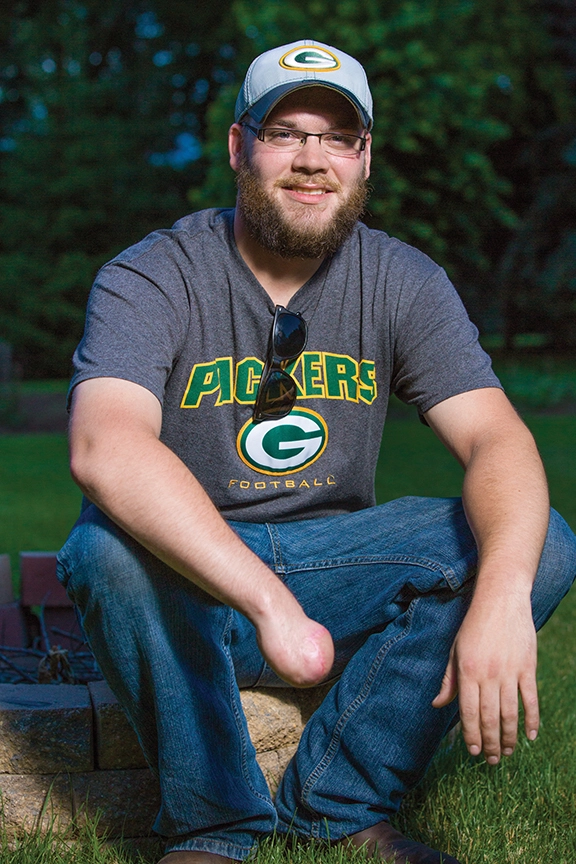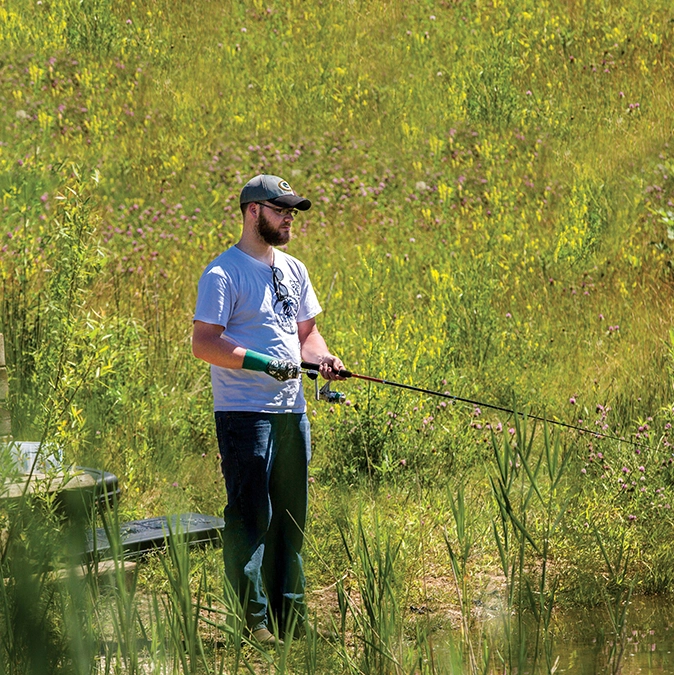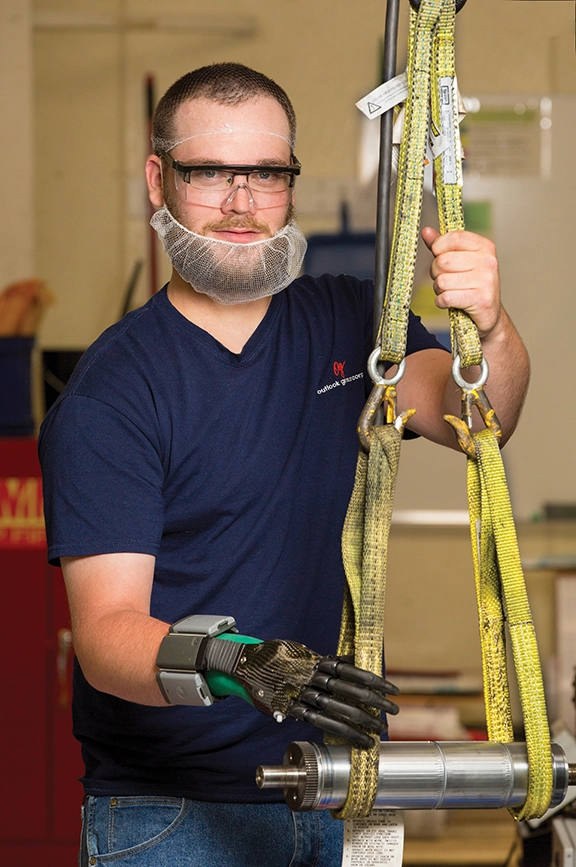By Sherri Edge

Images courtesy Advanced Arm Dynamics.
When Alex Kreuger lost part of his right hand in an accident at work, he immediately had three major concerns:
• Will I still have a job?
• Will I be able to go fishing?
• Will I ever shoot or bowhunt again?
Kreuger grew up hunting and fishing in the bountiful woods and waters near his home in Wisconsin. “I’ve been fishing for as long as I can remember,” he says. “I learned to shoot a gun when I was 11 or 12, and a bow when I was 14. Hunting and fishing mean the world to me.”
Kreuger works for a printing company that specializes in making labels for food items and other retail products. On June 9, 2015, he was nearing the end of his shift when he decided to shred a pallet of paper before going home. When the machine jammed, he tried to clear it, and his glove got pulled in, severely injuring his right hand.
Kreuger is one of thousands of people per year who become partial-hand amputees. Partial-hand amputations occur below the wrist and vary greatly from person to person. Frequently, partial-hand amputees have lost one or more fingers or portions of fingers, and in more severe cases, amputation is through the palm. While many articles and news stories focus on multiarticulating prosthetic hands, 90 percent of people with upper-limb loss are actually partial-hand amputees who are not able to wear a full multiarticulating prosthetic hand.
According to upper-limb specialist Patrick Prigge, CP, FAAOP(D), clinical manager with Advanced Arm Dynamics’ North Central Center of Excellence, Minneapolis, there is a need for more and better partial-hand prosthetic solutions. “It may not seem like that much loss, but to lose part of your hand and some or all of your fingers is a devastating injury,” he says. “With partial-hand being the largest population of upper-limb amputees, we work every day to create and innovate for this group.”

Kreuger’s amputation was through the palm and included the loss of all five fingers. In those first weeks after the accident, working with a psychologist and a physical therapist helped him cope with his loss. “But the biggest part of it was family,” he says. “I had family that supported me all the way and told me, ‘It’s just a bump in the road.’ And that’s the way I looked at it for a long time.”
While he was in the hospital, some of his co-workers stopped by for a visit. “The plant manager and two other people from work came over and told me I still had a job and was welcome to come back,” Kreuger says. “That took a big weight off my shoulders and a lot off my mind.”
He’d always worked with his hands and the idea of going back to work made him wonder if there was a prosthesis he could use like a tool, something that would help him on the job and at home. He read about passive silicone cosmetic hands that restored a lifelike appearance but offered no functional capability. Until recently, passive silicone hands were the primary option for partial-hand amputees. Kreuger took one look and knew that he wanted more.
He’d heard about Prigge, and even though it was a four-hour drive to Minneapolis, Kreuger and his dad decided it was worth the effort to meet with an upper-limb specialist. “They listened to what I said about my life and what I wanted to be able to do again, and showed me several options,” he says.

press is a two-handed task.
Prigge told them about Touch Bionics’ i-digits quantum, powered digits that can be used to create a myoelectric prosthesis for a partial hand. “i-digits have a gesture-control feature that allows Alex to quickly reposition his grasp while he’s working without having to make complicated switching signals,” Prigge says. He also recommended a custom activity-specific device with attachments for hunting, fishing, and yard work. “Prosthetic [devices] are tools, and not all tools can do the same job. Amputees need more than one tool to live a full life.”
Just two and a half months after his accident, Kreuger went back to work. “A lot of people looked at me like ‘How did you do that?’” he says. “But I’ve never been one to sit at home. I was always taught that you do what you have to do and you work for your keep.” Initially, he did light office work such as using a keyboard and managing files. With the guidance of an upper-limb prosthetic therapist, Kreuger focused on incorporating his prosthetic fingers into whatever he was doing. Gradually, his duties expanded out of the office and he was trained to operate an all-digital printing press and die cutter. “From where I started to what I’m doing now is a huge leap,” he says.
Still, it was having an activity-specific device with components for fishing, shooting, and bowhunting that really tipped the balance toward enjoying life. “To be able to do those things again was awesome,” he says. “And to have a prosthesis to help me do it was amazing. I couldn’t be happier with the [prosthesis] and the attachments I have.”
While Prigge works on developing more options for partial-hand amputees, he’s gratified to see people like Kreuger, who uses his prosthesis every day. “We can provide him with the tools to re-engage in life’s activities, but he really works hard at using them,” Prigge says. “Alex has a very bright disposition, and that strongly contributes to his success.”



